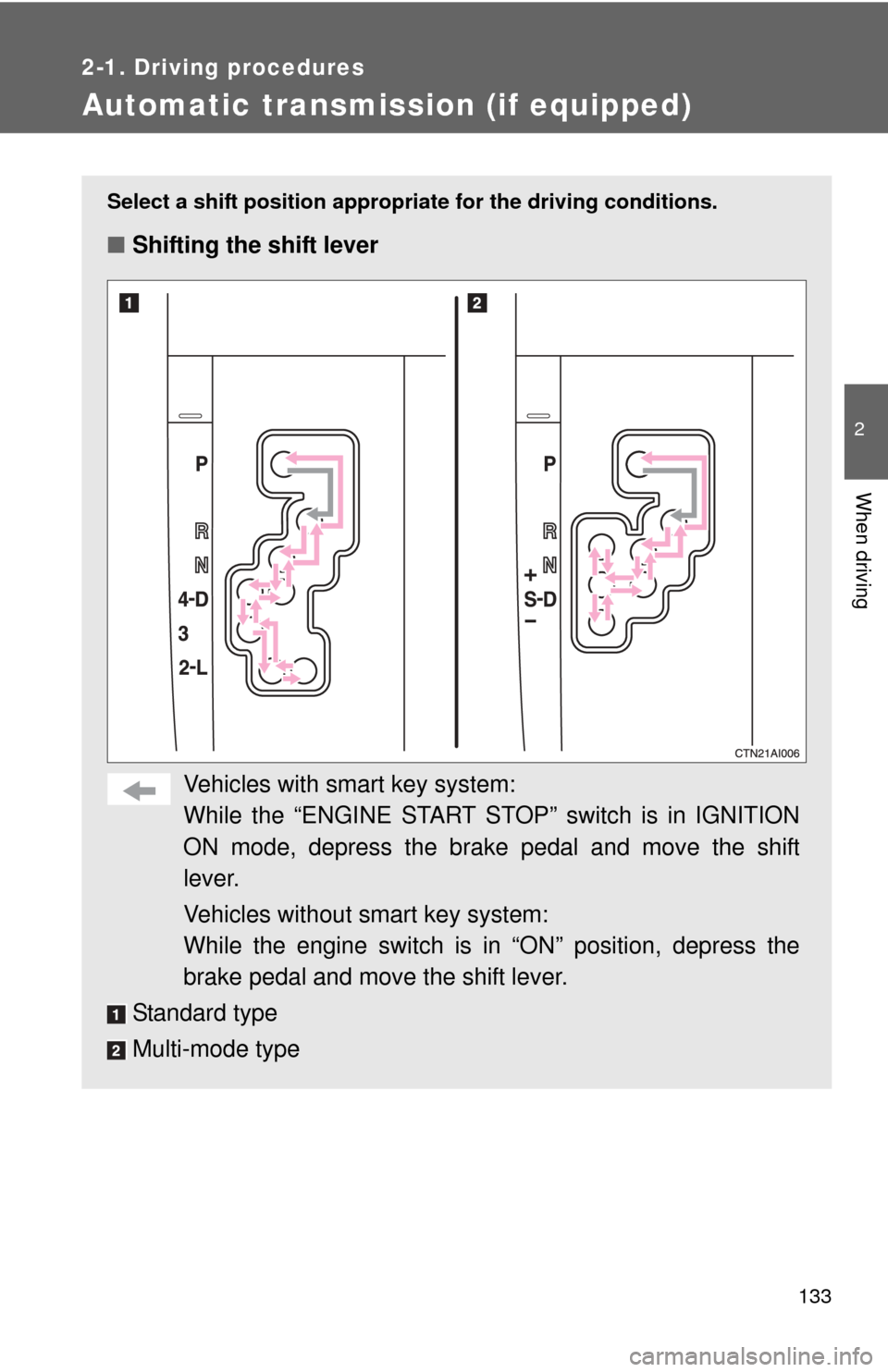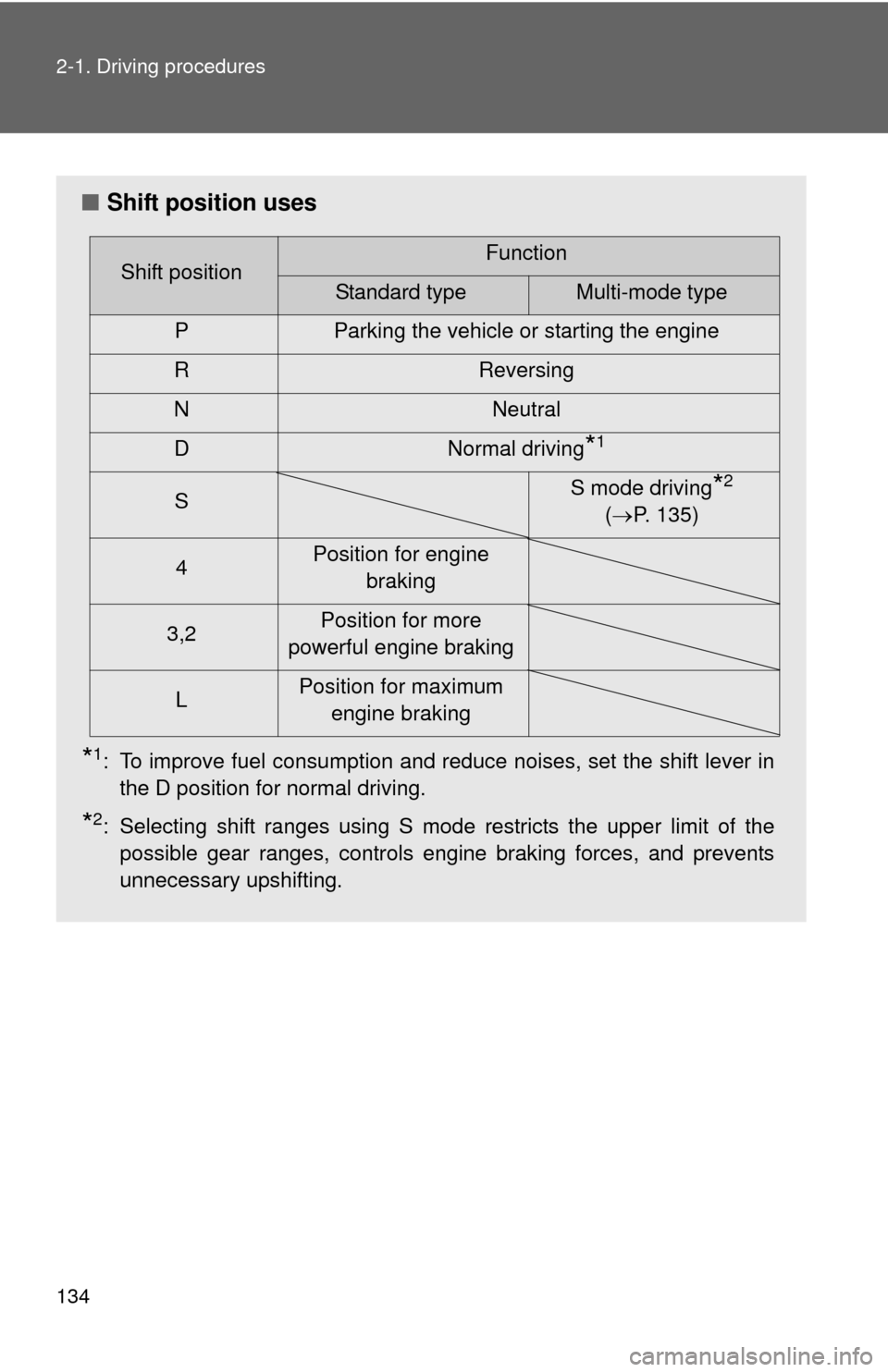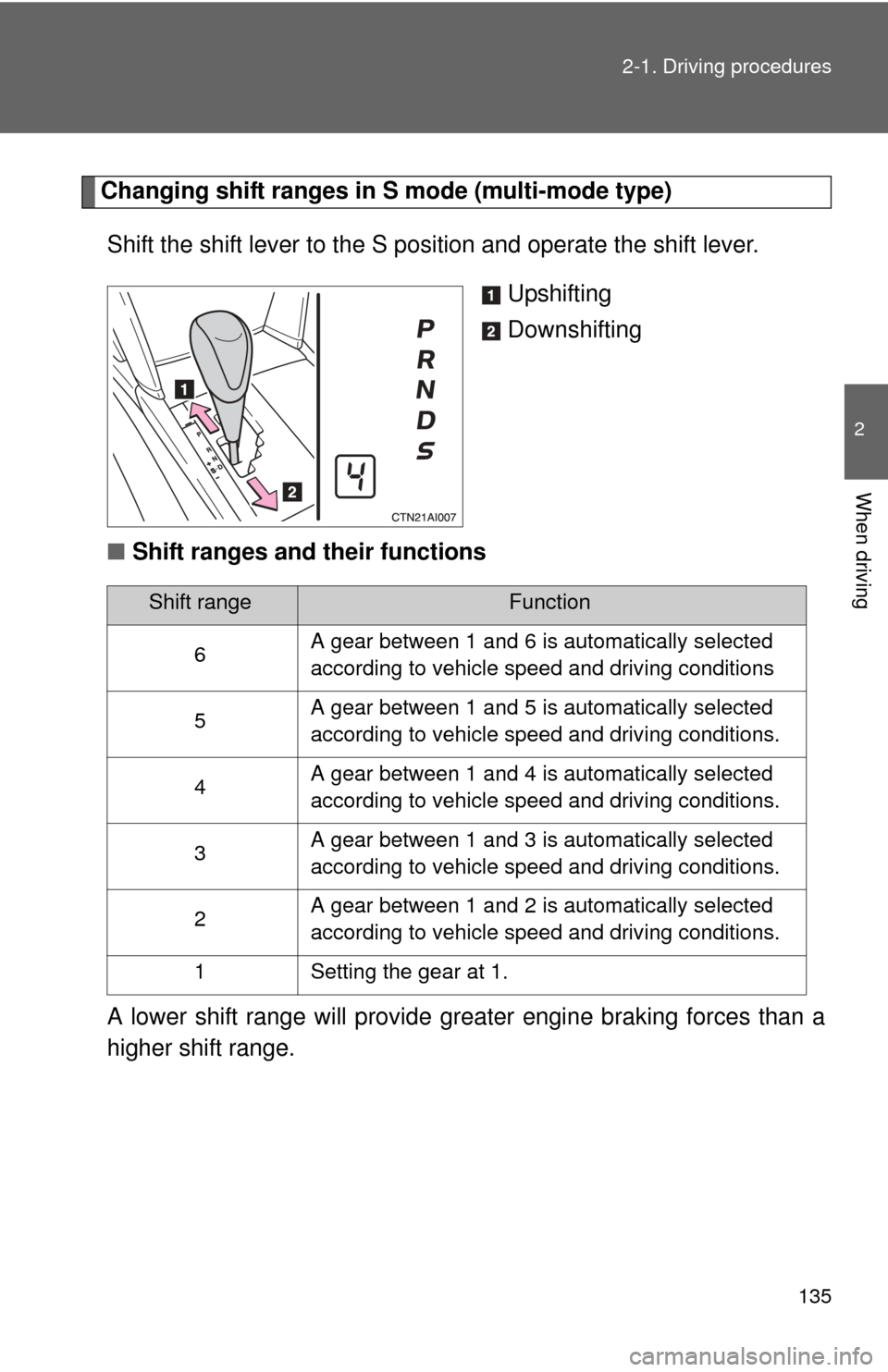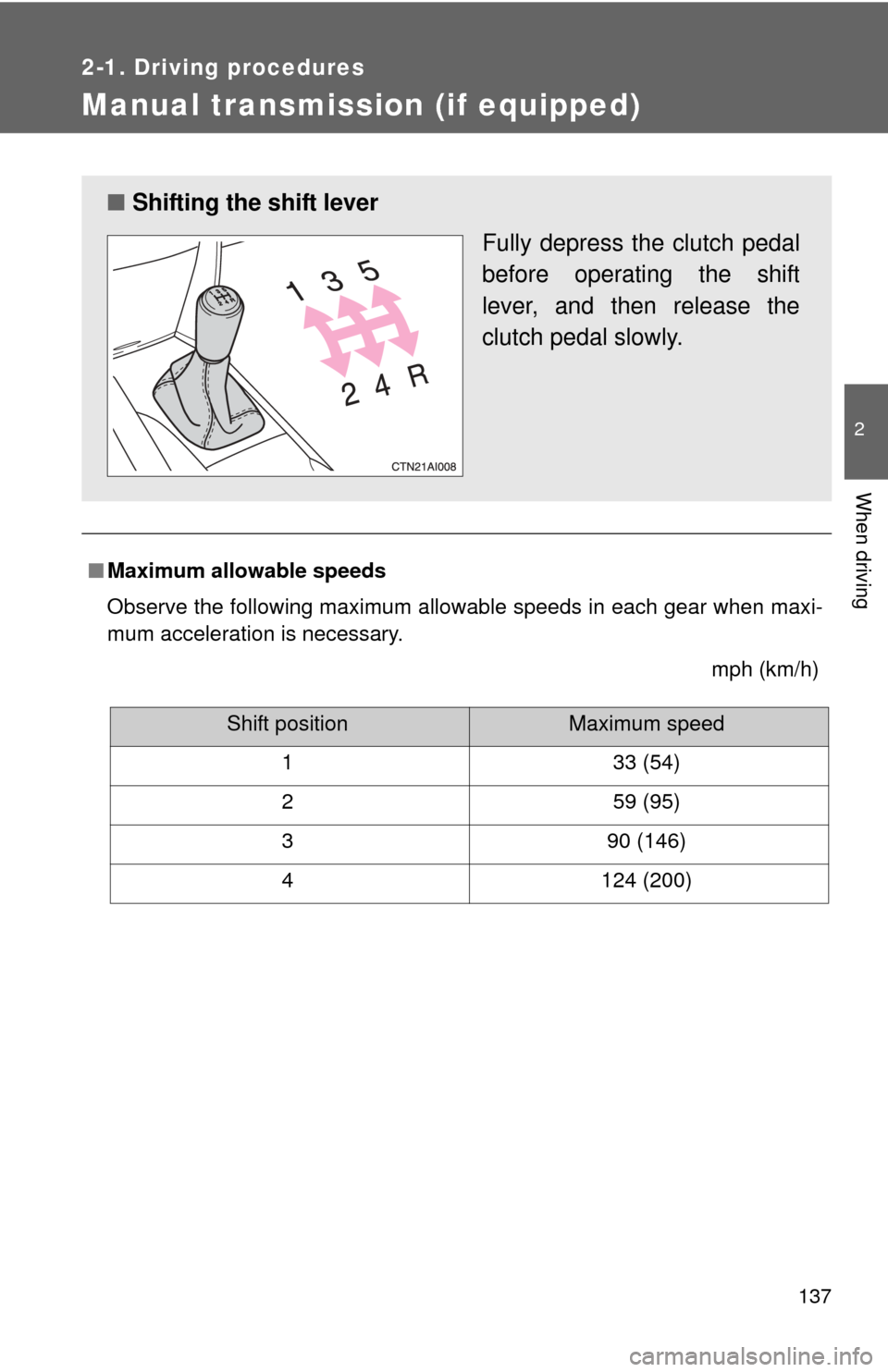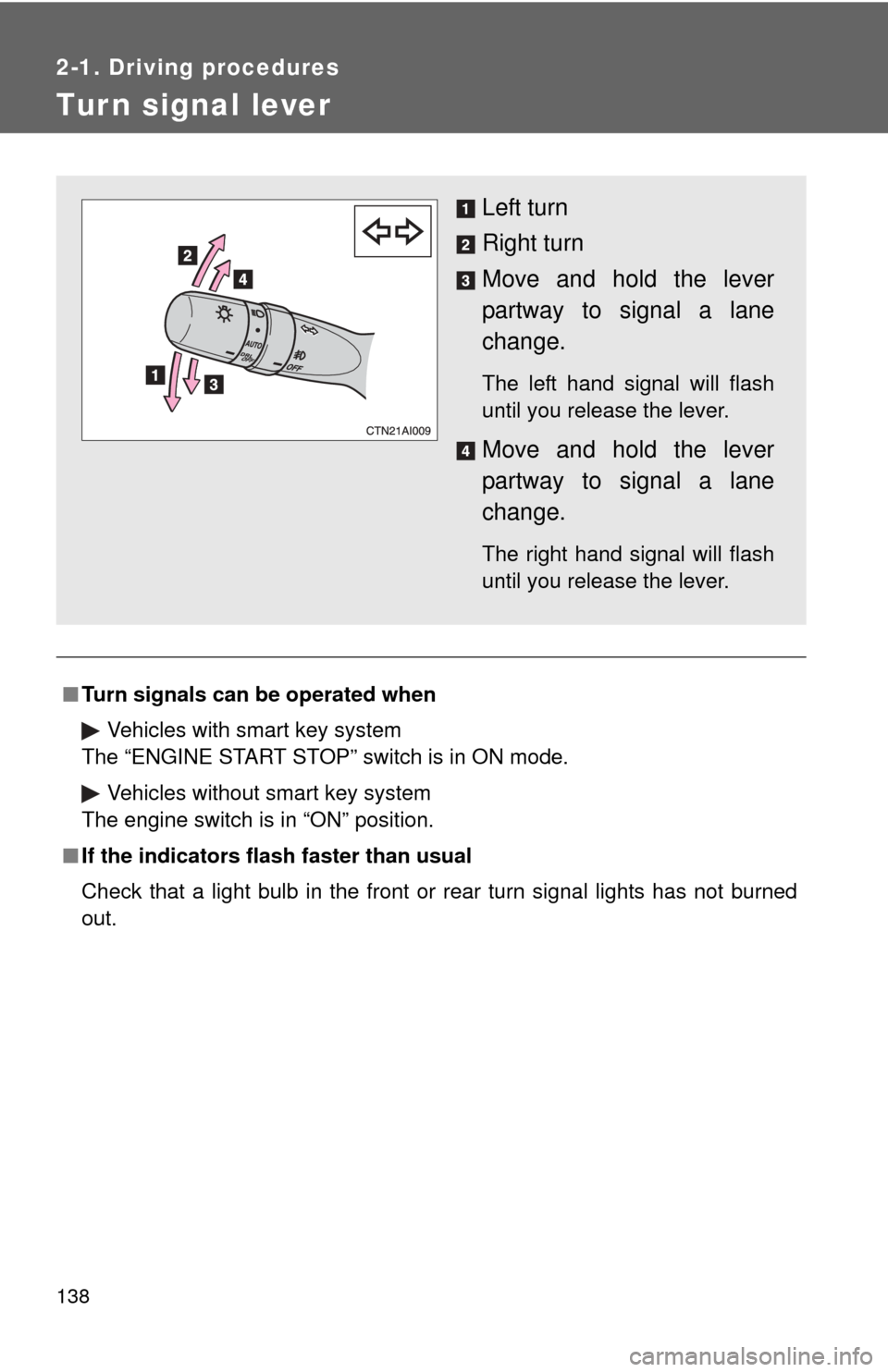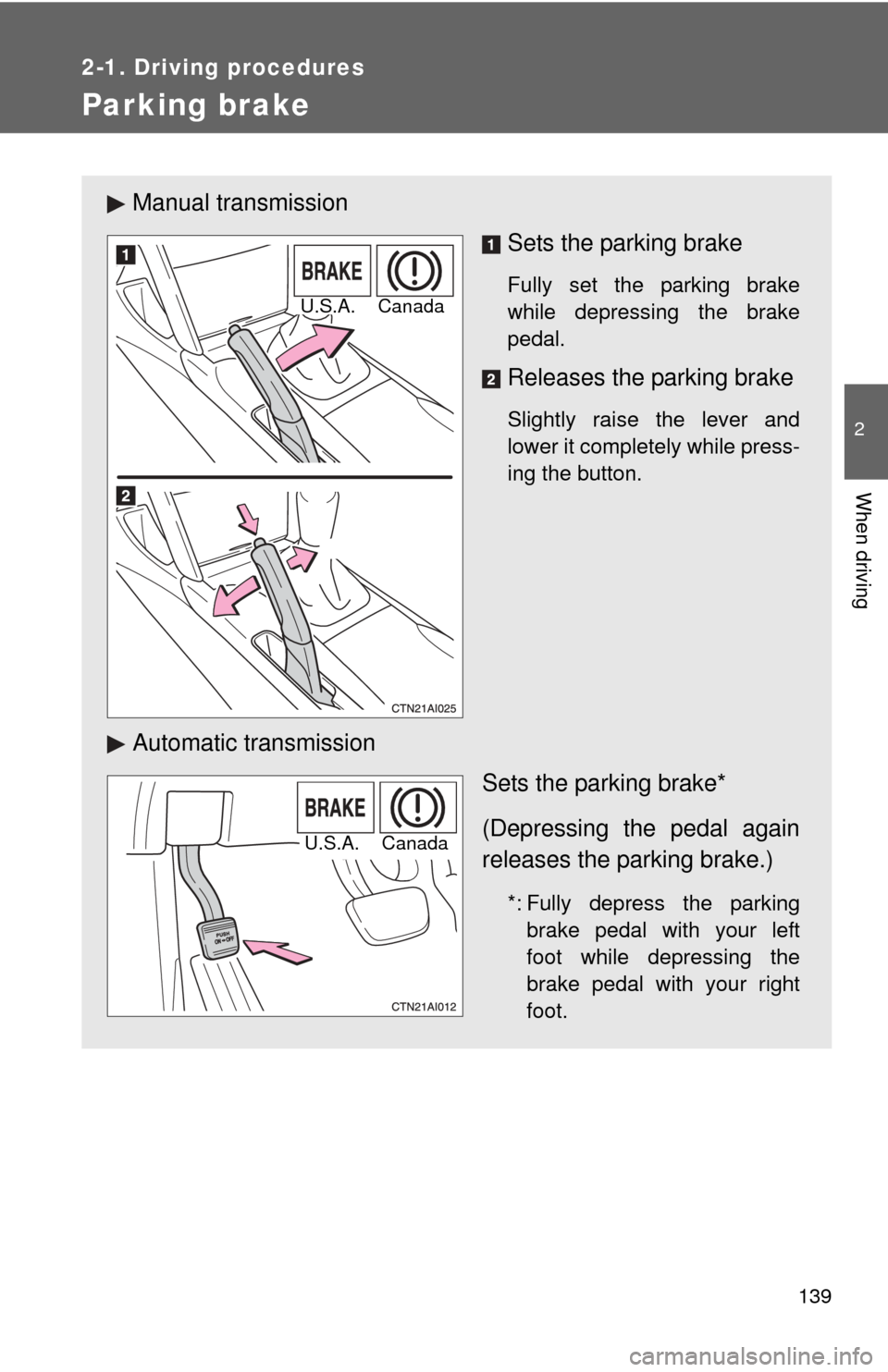TOYOTA CAMRY 2008 XV40 / 8.G Owners Manual
CAMRY 2008 XV40 / 8.G
TOYOTA
TOYOTA
https://www.carmanualsonline.info/img/14/6220/w960_6220-0.png
TOYOTA CAMRY 2008 XV40 / 8.G Owners Manual
Trending: engine, parking brake, coolant capacity, fuel reserve, wheel size, CD player, lumbar support
Page 131 of 476
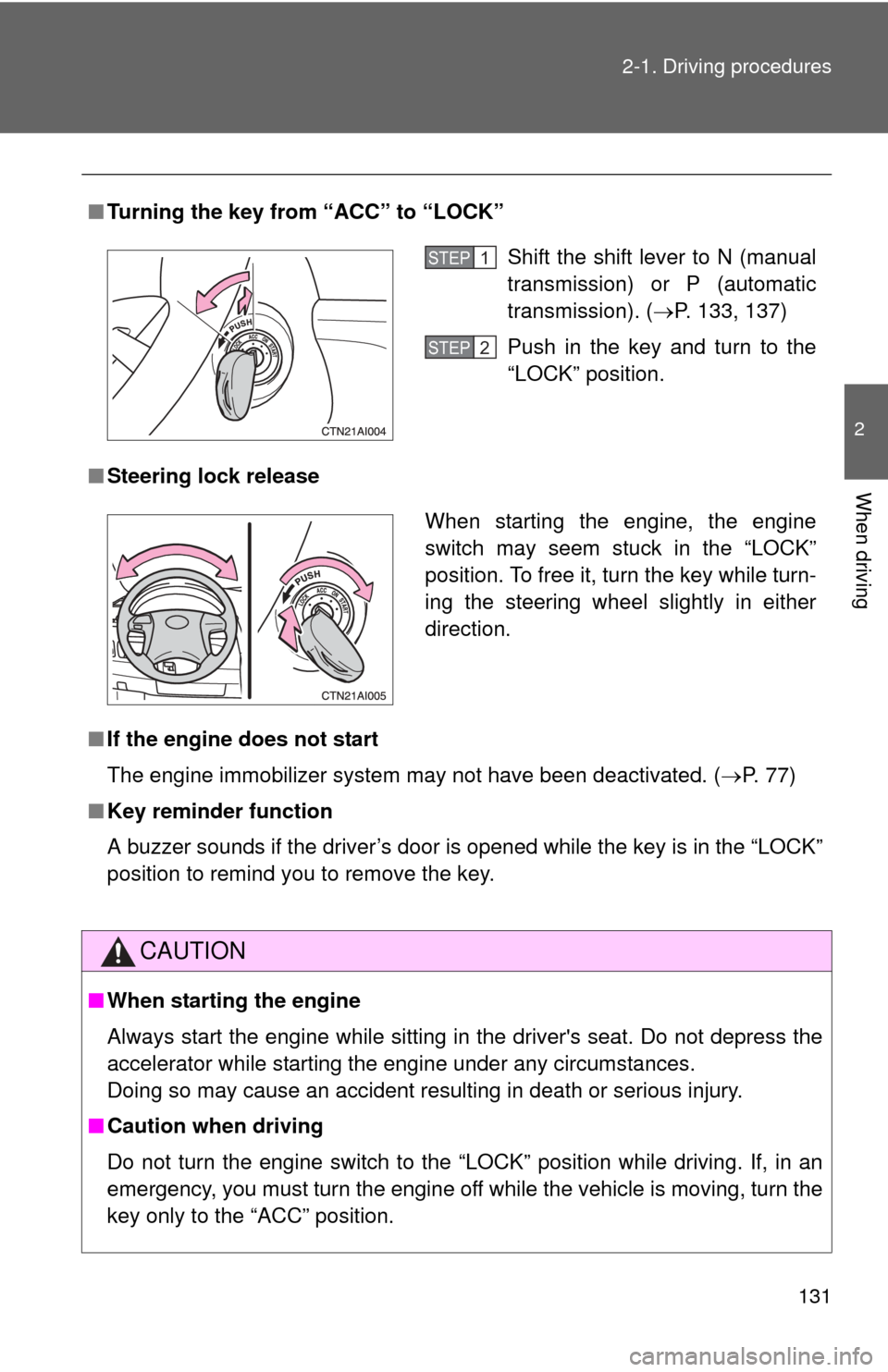
131
2-1. Driving procedures
2
When driving
■
Turning the key from “ACC” to “LOCK”
■ Steering lock release
■ If the engine does not start
The engine immobilizer system may not have been deactivated. ( P. 77)
■ Key reminder function
A buzzer sounds if the driver’s door is opened while the key is in the “LOCK”
position to remind you to remove the key.
CAUTION
■When starting the engine
Always start the engine while sitting in the driver's seat. Do not depress the
accelerator while starting the engine under any circumstances.
Doing so may cause an accident resulting in death or serious injury.
■ Caution when driving
Do not turn the engine switch to the “LOCK” position while driving. If, in an
emergency, you must turn the engine off while the vehicle is moving, turn the
key only to the “ACC” position.
Shift the shift lever to N (manual
transmission) or P (automatic
transmission). ( P. 133, 137)
Push in the key and turn to the
“LOCK” position.STEP1
STEP2
When starting the engine, the engine
switch may seem stuck in the “LOCK”
position. To free it, turn the key while turn-
ing the steering wheel slightly in either
direction.
Page 132 of 476
132 2-1. Driving procedures
NOTICE
■To prevent battery discharge
Do not leave the key in the “ACC” or “ON” position for long periods if the
engine is not running.
■ When starting the engine
●Do not crank for more than 30 seconds at a time. This may overheat the
starter and wiring systems.
● Do not race a cold engine.
● If the engine becomes difficult to start or stalls frequently, have the engine
checked immediately.
Page 133 of 476
133
2-1. Driving procedures
2
When driving
Automatic transmission (if equipped)
Select a shift position appropriate for the driving conditions.
■Shifting the shift lever
Vehicles with smart key system:
While the “ENGINE START STOP” switch is in IGNITION
ON mode, depress the brake pedal and move the shift
lever.
Vehicles without smart key system:
While the engine switch is in “ON” position, depress the
brake pedal and move the shift lever.
Standard type
Multi-mode type
Page 134 of 476
134 2-1. Driving procedures
■Shift position uses
*1: To improve fuel consumption and reduce noises, set the shift lever in
the D position for normal driving.
*2: Selecting shift ranges using S mode restricts the upper limit of thepossible gear ranges, controls engine braking forces, and prevents
unnecessary upshifting.
Shift positionFunction
Standard typeMulti-mode type
P Parking the vehicle or starting the engine
R Reversing
N Neutral
D Normal driving
*1
S S mode driving*2
( P. 135)
4 Position for engine
braking
3,2 Position for more
powerful engine braking
L Position for maximum
engine braking
Page 135 of 476
135
2-1. Driving procedures
2
When driving
Changing shift ranges in S mode (multi-mode type)
Shift the shift lever to the S position and operate the shift lever. Upshifting
Downshifting
■ Shift ranges and their functions
A lower shift range will provide greater engine braking forces than a
higher shift range.
Shift rangeFunction
6 A gear between 1 and 6 is automatically selected
according to vehicle speed and driving conditions
5 A gear between 1 and 5 is automatically selected
according to vehicle speed and driving conditions.
4 A gear between 1 and 4 is automatically selected
according to vehicle speed and driving conditions.
3 A gear between 1 and 3 is automatically selected
according to vehicle speed and driving conditions.
2 A gear between 1 and 2 is automatically selected
according to vehicle speed and driving conditions.
1 Setting the gear at 1.
Page 136 of 476
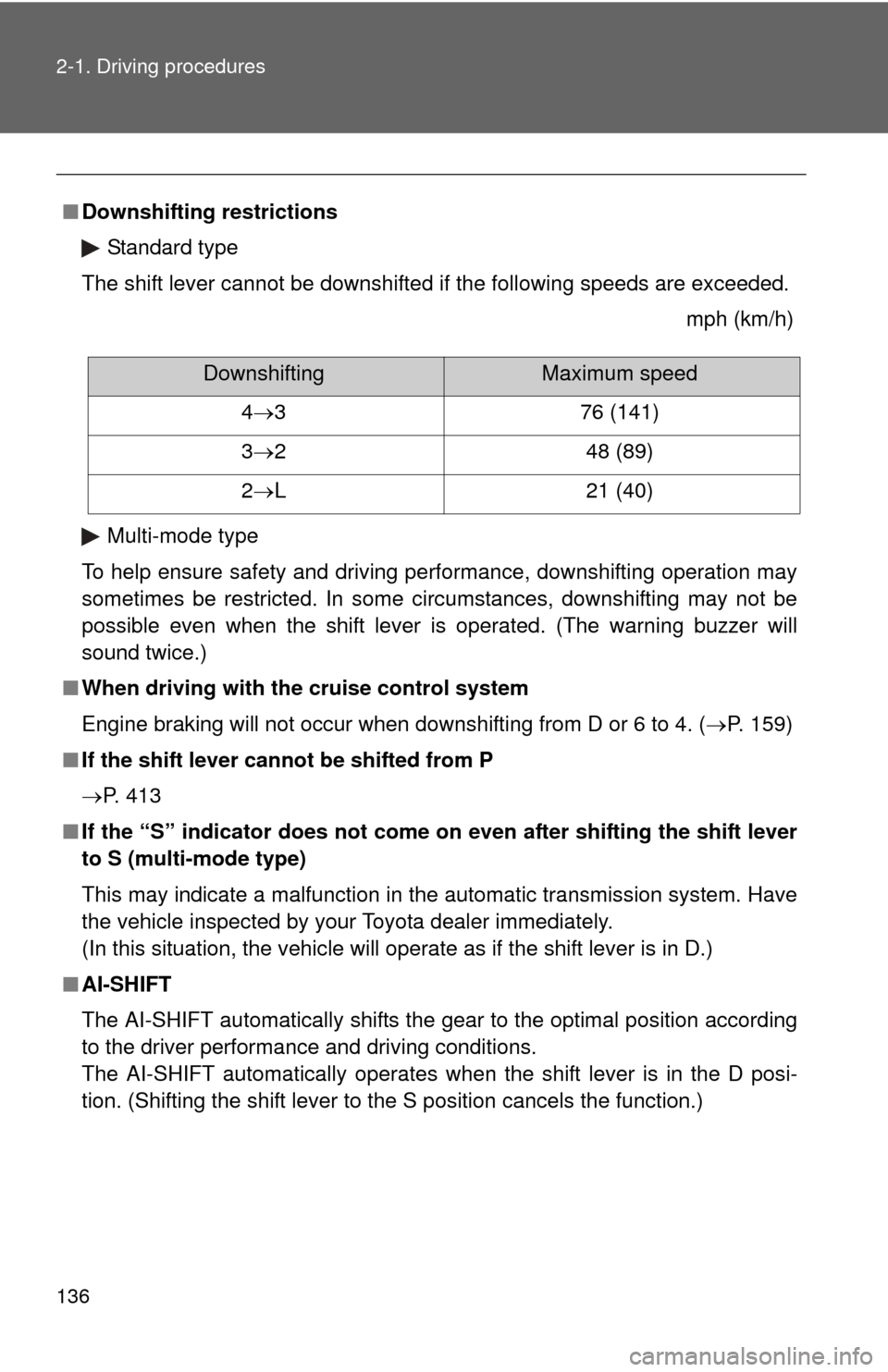
136 2-1. Driving procedures
■Downshifting restrictions
Standard type
The shift lever cannot be downshifted if the following speeds are exceeded.
mph (km/h)
Multi-mode type
To help ensure safety and driving performance, downshifting operation may
sometimes be restricted. In some circumstances, downshifting may not be
possible even when the shift lever is operated. (The warning buzzer will
sound twice.)
■ When driving with the cruise control system
Engine braking will not occur when downshifting from D or 6 to 4. ( P. 159)
■ If the shift lever cannot be shifted from P
P. 413
■ If the “S” indicator does not come on even after shifting the shift lever
to S (multi-mode type)
This may indicate a malfunction in the automatic transmission system. Have
the vehicle inspected by your Toyota dealer immediately.
(In this situation, the vehicle will operate as if the shift lever is in D.)
■ AI-SHIFT
The AI-SHIFT automatically shifts the gear to the optimal position according
to the driver performance and driving conditions.
The AI-SHIFT automatically operates when the shift lever is in the D posi-
tion. (Shifting the shift lever to the S position cancels the function.)
DownshiftingMaximum speed
4 3 76 (141)
3 2 48 (89)
2 L 21 (40)
Page 137 of 476
137
2-1. Driving procedures
2
When driving
Manual transmission (if equipped)
■Maximum allowable speeds
Observe the following maximum allowable speeds in each gear when maxi-
mum acceleration is necessary.
mph (km/h)
■Shifting the shift lever
Fully depress the clutch pedal
before operating the shift
lever, and then release the
clutch pedal slowly.
Shift positionMaximum speed
1 33 (54)
2 59 (95)
3 90 (146)
4 124 (200)
Page 138 of 476
138
2-1. Driving procedures
Tur n signal lever
■Turn signals can be operated when
Vehicles with smart key system
The “ENGINE START STOP” switch is in ON mode.
Vehicles without smart key system
The engine switch is in “ON” position.
■ If the indicators flash faster than usual
Check that a light bulb in the front or rear turn signal lights has not burned
out.
Left turn
Right turn
Move and hold the lever
partway to signal a lane
change.
The left hand signal will flash
until you release the lever.
Move and hold the lever
partway to signal a lane
change.
The right hand signal will flash
until you release the lever.
Page 139 of 476
139
2-1. Driving procedures
2
When driving
Parking brake
Manual transmissionSets the parking brake
Fully set the parking brake
while depressing the brake
pedal.
Releases the parking brake
Slightly raise the lever and
lower it completely while press-
ing the button.
Automatic transmissionSets the parking brake*
(Depressing the pedal again
releases the parking brake.)
*: Fully depress the parkingbrake pedal with your left
foot while depressing the
brake pedal with your right
foot.
U.S.A. Canada
U.S.A. Canada
Page 140 of 476
140 2-1. Driving procedures
NOTICE
■Before driving
Fully release the parking brake.
Driving the vehicle with the parking brake set will lead to brake components
overheating, which may affect braking performance and increase brake
wear.
Trending: radio antenna, clock, CD player, maintenance reset, ECU, engine, electric wiring


